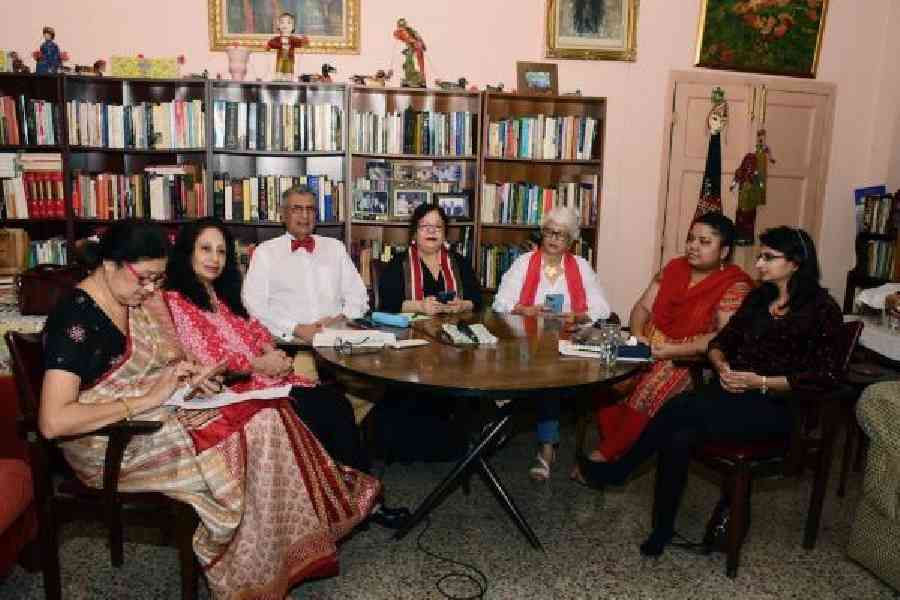The book discussion on Alice Munro’s short stories from the 1960s to the 1990s was appropriately timed and holds importance to Calcutta’s book lovers more now. A few weeks prior to the gut-wrenching Abhaya case, Andrea Skinner, writer Alice Munro’s daughter from her first husband, wrote about the terror of being sexually exploited by Munro’s second husband Fremlin, when she was only nine years old. She revisited the grief of her mother Alice abandoning her, and taking her molester husband’s side even as he was jailed for his offence. Munro conceded at the time that she loved Fremlin too much to leave him, though she did stay away from him for a year.
The panellists of The Rising Asia Literary Circle known for their typical persistence in researching the powerful connections between fiction and reality, questioned whether Munro’s female characters in her short stories were in some way also silenced like lambs, disempowered, and victims of misogyny.
In its exploration of Munro’s short stories, Julie Banerjee Mehta led the discussion with the question whether one of the world’s greatest short story writer’s brilliance as an artist and a writer could be seen separately from the way Munro has let her daughter down. “Look at the story Dulse. The middle-aged divorced woman who goes to the Bay of Fundy by the Atlantic Ocean, to ‘find’ herself, ultimately celebrates and finds herself victorious when one man of many guests at the inn gave her a goodbye gift of dulse, a salty seaweed snack. She felt validated at least one man liked her company,” pointed out Julie.
Anasuya Pal echoed Julie’s idea, and persuasively argued that throughout the 14 collections of short stories written over four decades, Munro’s women characters mostly live only to be useful to the men in their lives. Once the men leave, women are incapable of forging any identity and seem to be incapable of living their lives for themselves. Historian Harish Mehta argued: “We must not forget the historical context where the stories were unfolding. Remember the time that we are looking at and the place in which Munro’s women are located. It was rural Canada and misogyny was prevalent. In the story The Wild Swans, where Rose is going to Toronto for the first time by herself on the train. A man asked if she would mind if he sat down beside her. He said ‘I am a United Church minister’ and what followed was a breach of privacy and molestation. This is the kind of powerlessness, exploitation and helplessness that Munro was so acutely aware of in real life and would so expertly transform them onto the page.”
Anju Munshi looked closely at the theme of consistent tussle between mothers and daughters. She excavated the story Friend of My Youth. Independent scholar Mohini Maureen Pradhan calls the mother-daughter relationship a very real problem in Munro’s stories. Bringing out another aspect of Munro’s literary talent, Chaitali Maitra added: “Munro’s stories are written asking the reader to participate in what is happening. For instance, in the short story Meneseteung, the word comes to the reader with more than one meaning. Meneseteung is a river but also gestures towards the female condition of menstruation. Munro keeps challenging and persuading the reader to take part in the story.” In the concluding minutes of the intense discussion, Madhuchhanda Roy Chowdhury pointed at the layered narrative of Munro.










